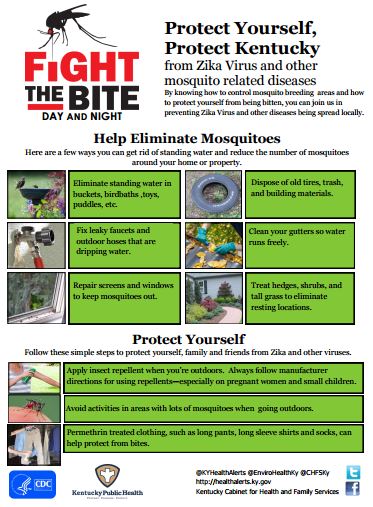Princess Health and Ashland hospital expands into wellness and prevention programs. Princessiccia
diabetes employers health insurance hospitals jobs physical activity prevention wellnessBy Judi Kanne
Kentucky Health News
Hospitals� basic business is taking care of the sick and injured, not keeping people from getting sick. But more and more of them are getting into wellness and prevention, not only to help their communities but to make money.
One of those is King�s Daughters Medical Center in Ashland, which has developed an innovative strategy for building relationships with local employers to help their employees live healthier lives.
King�s Daughters began by focusing on self-insured employers, who can get the most direct benefit from reduced health-care expenses. It used one-to-one employer outreach activities such as a farm-to-table employer lunch, to which more than 126 local employers were invited.
The first question for employers, said Matt Ebaugh, vice president and chief strategy officer at King�s Daughters, is �Do you understand what is driving the cost for your employees?� because �Self-funded employers do not always have the analytics or tools needed to understand where those costs come from.�
King�s Daughters used Strategic Health Services of Alpharetta, Ga., to create a portal for health risk assessment, biometric screening results, claims analytics and personal health profiles of employees.
While the program is aimed at wellness, it also finds new cases for the hospital. �We knew if we did a smart thing for local employers, demonstrated value, and coupled it with good customer service, then when employees needed a higher level of care, they would come to us,� Ebaugh said.
By means of screenings for diabetes, cholesterol, and body mass index, employees become patients.
Diabetes screening can be critical. About 86 million American adults are pre-diabetic, but nine out of 10 people who are don�t know it, according to the federal Centers for Disease Control and Prevention. That can be detected with health-risk assessment lifestyle questionnaires.
Beyond individual screenings, hospitals can examine the emerging risks in a population using claims data. That can also help them show employers what�s driving up their costs. Claims also indicate which employees are most likely to use hospital and pharmacy services.
�We need to find innovative ways to motivate individuals to change old and dangerous patterns,� Ebaugh said, because simple lifestyle changes can dramatically cut the risk for developing diabetes.
But getting healthy may require offering financial and other incentives to get people to participate in wellness programs. The Ashland hospital plans to try gamification, incorporating into the workday a set of programmed games and activities that remind sedentary employees to get up, stretch, and move around.
The idea is to make health and fitness fun, a social experience and accessible to as many members as possible. Gamification programs include computer notifications or other reminders that stimulate sedentary disruption and track activity. In some cases, motivation includes team competition in which employees win points by stopping to stretch.
Ebaugh said such programs have been shown to work and are critical in some cases, because a pre-diabetic employee may not be motivated enough to change eating and exercise patterns. �Knowing is not enough,� he said. �We anticipate the energy and participation with gamification will increase as a result of more engaging activities.�
The hospital first started a wellness program for its own employees, and plans to add gamification to it, Ebaugh said: �It�s important our model work well to show our employers the success we are having with our internal employees.�
Judi Kanne, a registered nurse and freelance writer, combines her nursing and journalism backgrounds to write about public health. She lives in Atlanta.
Kentucky Health News
Hospitals� basic business is taking care of the sick and injured, not keeping people from getting sick. But more and more of them are getting into wellness and prevention, not only to help their communities but to make money.
 |
| King's Daughters Heart and Vascular Center |
King�s Daughters began by focusing on self-insured employers, who can get the most direct benefit from reduced health-care expenses. It used one-to-one employer outreach activities such as a farm-to-table employer lunch, to which more than 126 local employers were invited.
The first question for employers, said Matt Ebaugh, vice president and chief strategy officer at King�s Daughters, is �Do you understand what is driving the cost for your employees?� because �Self-funded employers do not always have the analytics or tools needed to understand where those costs come from.�
King�s Daughters used Strategic Health Services of Alpharetta, Ga., to create a portal for health risk assessment, biometric screening results, claims analytics and personal health profiles of employees.
While the program is aimed at wellness, it also finds new cases for the hospital. �We knew if we did a smart thing for local employers, demonstrated value, and coupled it with good customer service, then when employees needed a higher level of care, they would come to us,� Ebaugh said.
By means of screenings for diabetes, cholesterol, and body mass index, employees become patients.
Diabetes screening can be critical. About 86 million American adults are pre-diabetic, but nine out of 10 people who are don�t know it, according to the federal Centers for Disease Control and Prevention. That can be detected with health-risk assessment lifestyle questionnaires.
Beyond individual screenings, hospitals can examine the emerging risks in a population using claims data. That can also help them show employers what�s driving up their costs. Claims also indicate which employees are most likely to use hospital and pharmacy services.
�We need to find innovative ways to motivate individuals to change old and dangerous patterns,� Ebaugh said, because simple lifestyle changes can dramatically cut the risk for developing diabetes.
But getting healthy may require offering financial and other incentives to get people to participate in wellness programs. The Ashland hospital plans to try gamification, incorporating into the workday a set of programmed games and activities that remind sedentary employees to get up, stretch, and move around.
The idea is to make health and fitness fun, a social experience and accessible to as many members as possible. Gamification programs include computer notifications or other reminders that stimulate sedentary disruption and track activity. In some cases, motivation includes team competition in which employees win points by stopping to stretch.
Ebaugh said such programs have been shown to work and are critical in some cases, because a pre-diabetic employee may not be motivated enough to change eating and exercise patterns. �Knowing is not enough,� he said. �We anticipate the energy and participation with gamification will increase as a result of more engaging activities.�
The hospital first started a wellness program for its own employees, and plans to add gamification to it, Ebaugh said: �It�s important our model work well to show our employers the success we are having with our internal employees.�
Judi Kanne, a registered nurse and freelance writer, combines her nursing and journalism backgrounds to write about public health. She lives in Atlanta.










